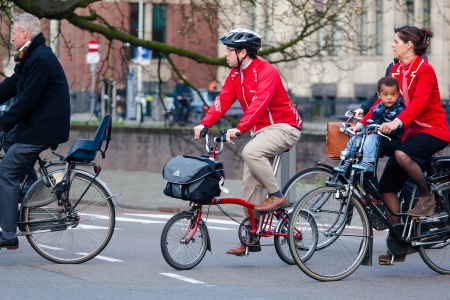This fact sheet is currently being updated. You will find a new version here shortly.
A bicycle helmet is intended to protect cyclists against head and brain injuries when they are involved in crashes. The helmet does not prevent bicycle crashes (see the SWOV fact sheet Cyclists for general bicycle safety measures). International research shows that in case of a crash helmeted cyclists are 60% less likely to sustain serious head/brain injuries and 70% less likely to sustain fatal head/brain injuries than cyclists not wearing a helmet. Bicycle helmet effectiveness may even increase by stricter European requirements for bicycle helmet testing.
In the Netherlands, most touring and sports cyclists wear a helmet; in ordinary traffic hardly anybody does. In countries with helmet laws the percentage of cyclists wearing a helmet is (obviously) much higher, however, even in countries where bicycle helmets are not mandatory, cyclists wear helmets more often than in the Netherlands.
Reasons not to wear a helmet are that the bicycle ride is too short and a helmet ‘therefore not needed’, that the helmet is uncomfortable (too hot or too cold) and that the cyclist’s peers do not wear helmets either. A public support study among (road safety) organisations showed that measures encroaching on a sense of freedom are considered most controversial. Bicycle helmet campaigns generally result in higher usage, particularly among children, although usage sometimes decreases after the campaigns have ended. People are also more inclined to wear helmets when others (peers) are seen to do this too and also when it has become a habit.
In the Netherlands, there is little general support for mandatory helmet use. Most importantly because cycling would become (far) less popular if helmets were mandatory. Some foreign studies do indeed show that bicycle use decreases after the introduction of mandatory helmet use, albeit that most studies do not find any effect or merely a temporary effect. These international studies are probably not indicative of the effect to be expected in the Netherlands since, here, bicycles are relatively more often used for ‘transport’ than for recreational purposes.
